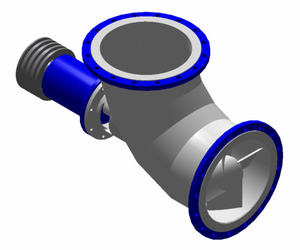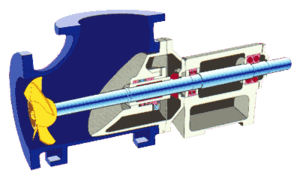Axial Pumps
Axial Pump is a common type of pump that essentially consists of a propeller or an axial impeller in a pipe. The propeller can be driven directly by a sealed motor in the pipe or by electric motor or petrol or diesel engines mounted to the pipe from the outside or by a right-angle drive shaft that pierces the pipe.
The main advantage of an axial pump is that it has a relatively high discharge at a relative low head. For example, it can pump up to 3 times more water and other fluids at lifts of less than 4 meters as compared to the more common radial-flow or centrifugal pump. It also can be easily be adjusted to run at peak efficiency at low-flow or high-pressure and high-flow or low-pressure by changing the pitch on the propeller .
These pumps have the smallest of the dimensions among many of the conventional pumps and are more suited for low heads and higher discharges. One of the most common applications of axial pumps would be in handling sewage from commercial, municipal and industrial sources. In agriculture and fisheries very large horsepower axial pumps are used to lift water for irrigation and drainage. In east Asia, millions of smaller horsepower (6-15 HP) mobile units powered mostly by single cylinder diesel and petrol engines are used by smaller farmers for crop irrigation, drainage and fisheries.
In sailboats, axial pumps are also used in transfer pumps used for sailing ballast. In power plants, they are used for pumping water from a reservoir, river, lake or sea for the refrigeration line. In the chemical industry, they are used for the circulation of large masses of liquid, such as in evaporators and crystallizers. In sewage treatment, an axial pump is often used for internal mixed liquor recirculation .

